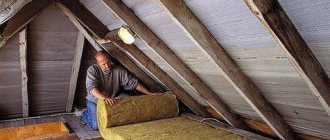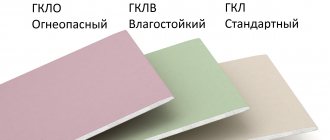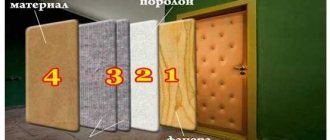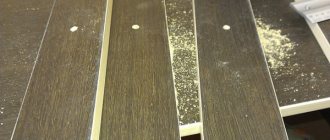Swedish technology for insulating wooden windows
Step 1. Inspect the condition of the wood
It is important that the doors, if they are old, are strong enough and do not crumble into dust. We also carefully examine the lower part of the sash - this is where the wood most often rots under the influence of moisture.
We check the condition of window fittings. Tighten the screws if necessary. If there are small cracks in the windows, we fill them with wood putty. If necessary, remove the old paint and sand the wood with sandpaper. All actions in this step should be aimed at identifying and eliminating minor frame defects.
Preparing windows for insulation using Swedish technology
Step 2. Prepare the tools. You will need the seal itself, a sharp utility knife, a roller for installing the seal and a router for cutting a groove on the frame.
Video clip
Step 3. Remove the frames. Using a level we make markings. It is necessary to draw perfectly straight lines so that the seal does not deform.
Using a router along the perimeter of the sash, select a groove of 3x7 or 3x5 mm. We select the groove at an angle of 45 degrees. In places where hinges are attached to the frame, we do not cut a groove. We clean the dust from the grooves with a vacuum cleaner.
Working with a milling cutter
Step 4. We begin to insert the herringbone seal into the groove, rolling it with a roller. We move the roller in the “backwards” direction (towards the already inserted edge) so as not to stretch the seal.
Seal installation diagram
Rolling the seal with a roller
Step 5. Increase the insulation effect. We remove the glazing beads, take out the glass, and apply a layer of silicone sealant to the seat. We install the glass in place and secure it with glazing beads.
If a little silicone leaks out and gets on the glass, do not smear it, but wait until it dries, and then clean it off with the edge of a utility knife.
Insulation scheme for a double-hung window using Swedish technology
As a result of window insulation using Swedish technology, draft protection is provided, and the room becomes warm and dry. A high-quality seal will last for many years and maintain its aesthetic appearance.
An example of high-quality insulated windows
Types of window seals
Seals differ not only in materials, but also in external features. It will be ideal if you purchase exactly the same cord that was originally. Gaskets from different companies, although similar at first glance, differ significantly, and choosing the wrong option does not guarantee that the window will have the required degree of tightness.
A gasket that is too thick will increase the load on the hinge group and locking hardware and will be deformed, which will shorten its service life, while a gasket that is too thin will not fit as well as necessary. Take the worn part with you to the store - this way you will avoid making a mistake when choosing.
REFERENCE! It will not be difficult to purchase a high-quality seal if your home has a profile from well-known manufacturers. But, since many little-known companies copy their products, many elements can be used in both the first and second cases. For example, elements from brands such as Novotex, Proplex, Vitrage can be used in designs manufactured by KBE; sealants from REHAU are excellently used in modifications from Brusbox and Montblank.
Rubber types
Products made from synthetic rubber are quite effective and are purchased more often than others. They withstand both low and high temperatures at the proper level, are elastic and can withstand deformation for a long time without compromising their performance characteristics. With good care, rubber seals last 20-30 years. Affordable and safe for human health.
Various additives are added to products of this type to improve quality characteristics. For example, rubber based on copolymers (which includes diene, propylene, ethylene, catalysts) withstands the effects of aggressive chemical compounds, oils, water and ultraviolet radiation, and a wide temperature range (from -50 to +140 degrees). It has a high strength threshold and is not damaged when stretched by 300% or more. Products based on peroxides of organic origin are becoming increasingly widespread.
IMPORTANT! You should not buy samples with the addition of sulfur - they are not so durable and over time they leave unsightly brown marks on the white surface of the window frames.
Silicone varieties
Silicone seals are the most expensive of all existing types, but also the most durable. With proper use and careful handling, they can last 40 years or more. Advantages of silicone: high elasticity (even at -60), withstand the aggressive effects of chemical compounds and the environment, and are not afraid of ozone radiation. But they are not resistant to mechanical damage and can easily tear during installation.
Polymer EPDM types
Organic peroxides act as a vulcanizing agent in the production of these seals. The warranty period provided by the manufacturer is 20 years. It can withstand both very high and low temperatures, is resistant to sudden changes, and is not afraid of ultraviolet radiation and direct rays of the sun. But such gaskets have a strong unpleasant odor, and during installation only glue is allowed to be used, and welding is prohibited. Yes, and there is a “minus” on the financial side: colored seals cost two to three times more than black ones.
Thermoplastic elastomer (tep) varieties
Thermoelastopolymer is most often found in finished double-glazed windows. Previously, this PVC was used only in regions with mild climates, since it could not withstand the low temperatures and piercing winds of harsher places.
Now new modifications with rubber and polyethylene have appeared on the market, which are more resistant to negative temperatures and have improved performance characteristics: they can be installed in rooms with an increased risk of fire, they are safe for people and are much cheaper than EPDM.
In addition, a large selection of colors allows you to choose the material to suit any color combination. During installation, the seal can be welded or glued - your choice.
Disadvantages: easily deformed and quickly fails under frequent mechanical stress; the level of elasticity is low; softens under high temperatures.
PVC and foam types
Foam rubber is lightweight and has excellent thermal insulation properties, but you should not count on strength here: such a seal will last no more than 3 years. PVC can only be used in rooms with good heating.
REFERENCE! Seals from the following companies have become especially popular: Rehau, Veka, KBE, Schlegel (foreign) and SibrTech, Gasket LLC, Obninskgazpolymer (domestic). The quality of the products of these manufacturers is at a high level, they have quite positive reviews, and Russian seals are not inferior to foreign ones.
Reasons for replacing seals
The tightness of a plastic window depends on many factors: from the quality of the frame itself to the tightness of the glass unit. But every factor is important, including the degree of pressing of the sash, which is ensured by the presence of sealing rubber bands. If they are worn out, the following negative phenomena may appear:
An old seal can cause the window to freeze. The appearance of condensation on double-glazed windows.
If condensation forms on the glass, it's time to change the seal.
When closing, the sash has a play and does not close tightly. A draft is felt near the openings.
Of course, it may be that the whole reason lies in the system settings, and a simple adjustment of the plastic windows will correct the whole situation. But, if all options have been tried and there is no result, then the seal will definitely need to be replaced.
Functions of a window seal
The main advantage of plastic windows over their wooden counterparts is their tightness, due to which they have high thermal and noise insulation characteristics. In addition to the double-glazed window itself, maintaining a comfortable temperature and silence in the room is ensured by a special elastic seal located along the contour of the frame.
When the window sash closes, it presses the seal, firmly adhering to the frame. But only a high-quality gasket can prevent the penetration of cold and noise from the outside. When this element loses its original performance properties, it begins to blow from the window, it fogs up or freezes. The only way to restore the window's tightness is to replace the seal.
Which seal is better
Seals are an important component of a window. After all, it depends on them how tightly the sash will fit to the profile, and, accordingly, whether your home will be warm. There are a large number of different types of seals. We will look at the most common ones.
Types of seals:
TPE (abbreviation for English Thermoplaste Elastic - elastic thermoplastic) - this type of seal is mainly used in the automatic assembly of plastic windows. It is very convenient for automatic assembly of profiles. It has a very small corner radius and is welded at the corners of the profile. Its cross-section can be given any complex shape. It can be painted in all the colors of the rainbow. Finally, it is fireproof and relatively cheap.
But this type of seal has a number of big disadvantages:
- Does not tolerate temperature changes well, becomes brittle in the cold, and too soft in the heat (problems can arise from temperatures of -20 degrees and below or +35-40 degrees and above)
-Low resistance to ultraviolet radiation
-Poor elasticity (does not return well to its original shape after mechanical stress)
EPDM - ethylene propylene rubber. (English EPDM: Ethylene Propylene Diene Monomer).
The most popular type of seal for plastic windows. Does not change properties at temperatures from -60 to +120 degrees, is resistant to mechanical load cycles, and is not afraid of either ultraviolet radiation or precipitation.
This seal is characterized by high resistance to temperature changes and moisture. Practically does not undergo aging processes under the influence of ultraviolet radiation and aggressive substances.
However, the cost of this type of seal is quite high. That is why it is rarely used in glazing. In addition, it has low resistance to mechanical stress, in which the silicone seal is inferior to EPDM
And finally, we must not forget about ordinary tires. That is, about vulcanized rubber. It has all the advantages and disadvantages of natural material. Provides good sealing, but can “succumb” to atmospheric and climatic factors. For example, cracking due to sudden and frequent temperature changes.
Seal shape
Seals can also be divided by shape. They are solid and petal. Both types are used for glazing houses. However, solid seals do not tolerate temperature changes well, so it is recommended to use petal seals
When choosing a petal seal, it is important to pay attention to the number of seal contours. Seals can be either single-circuit or double-circuit. We recommend choosing a double-circuit seal, as it is tighter than a single-circuit seal by an average of 26%
We recommend choosing a double-circuit seal, as it is tighter than a single-circuit seal by an average of 26%
In the end, we choose a double-circuit EPDM seal as it has shown the best results.
But, the quality of the EPDM sealant depends on the brand of the sealant, or more precisely on the one who produced it.
The best seals come from Germany, so it is better to choose them. Then ask to see the following sealant certificates: GOST and ISO 9001:2008 certificate of conformity.
You can check the quality of the seal yourself.
Ask for a piece of sealant, stretch it hard and see if it regains its original length. If not, then the quality of the seal is not the best. It is also worth sniffing it - it should not emit any strong or unpleasant odors, other than a faint smell of rubber.
The Window Empire company recommends a double-circuit EPDM sealant from the German brand Semperit!
Types of sealing gaskets
Currently, there is a wide variety of seals for metal-plastic window structures. These products are made from different materials, which determines their performance, durability and, as a result, cost:
- PVC seal. Belongs to the category of the cheapest materials with mediocre technical characteristics. Its warranty period is only 3 years. Using PVC gaskets, it is recommended to replace the seal on windows that do not directly face the street. This material is suitable, for example, for interior window structures or for windows facing a glazed balcony, etc.
- Rubber compressor. Rubber and sulfur are used to produce such products. At a fairly low cost, these gaskets can last up to 30 years. This option is widely used by manufacturers of metal-plastic structures.
- Silicone seal. Belongs to the middle price category, is an environmentally friendly material with high performance qualities. Its service life is on average 40 years. Silicone tolerates temperature changes, exposure to UV rays, ozone and oxygen well. Using this material, seals can be replaced in plastic windows not only in residential premises, but also in industrial facilities.
- Polymer seal (EPDM). Quite an expensive material designed for operation in conditions of extremely low temperatures. In the cold it does not crack and retains its shape.
- Thermoplastic elastomer (TPE). It is an improved silicone, characterized by increased resistance to mechanical and temperature influences. Despite the rather high cost, thermoplastic elastomer seals are gaining increasing popularity among consumers.
Which seal for a plastic window is better?
Some citizens come to the hardware store as if to play checkers. The main question: “Is your window seal white or black?” - everything else interests them little
Although if the seal turns out to be of crappy quality, then it doesn’t matter what color it is - you’ll suffer in the winter cold. And in the spring you will already be asking about other characteristics of window seals - heat resistance, wear resistance, etc.
We will try to talk about these characteristics in our article (the reader can glean some information about window seals from the article “Types of window fittings - an overview” previously published on our website).
Sectional seals for window glass
Next, we will talk only about seals for factory-made plastic windows - we will leave the story about various types of rag and foam rubber gaskets for the site Samodelkin.ru.
Myth #1: Seals come in black and white.
In fact they are all black. Or an unimaginable mud color. They are made gray by special additives in the plastic mass from which they are made.
Sometimes they are made “gray” so much that to the eye they are perceived as white. These are the kind of seals that are considered the most fashionable, causing a lot of trouble for managers and sellers of construction stores.
Myth #2: White seals turn gray over time. Including due to dust that eats into their porous structure.
Not at all! Modern science and technology have reached such heights that they make it possible to maintain a stable color of rubber or polymer. And you don’t need to wipe the soft white sealant more often than other parts of your plastic window.
Myth No. 3: Additives that lighten the sealant material make it more fragile and sensitive to temperature changes.
Not at all! The same science has long invented dyes that in no way affect the properties of the material to which they are added.
Myth 4: you need to buy insulation with a maximum service life.
Flange seal in window profile
It must be said that advertising brochures usually indicate the service life of the seal at 30-40 years. In fact, this is the time during which irreversible chemical changes will occur in the structure of the seal. So to speak, his natural aging will take place.
In reality, this parameter is important only for those insulating gaskets that are mounted between the glass and the profile. For the most critical gasket - between the sash and the frame - the “lifetime” is usually calculated at 5-7 years, and even then in the best case.
If the housekeeper forgot to switch the window from winter to summer mode, then the pretend (from the word “pretend”, not “pretend”) insulation can wear out in one season. And it will have to be changed.
Therefore, you need to look not at the color of the seal and not at the advertised service life, but, first of all, what material the seal is made of and what are the properties of this material.
So how to properly prepare plastic windows for winter yourself?
First, think about what bothered you last winter? How are things going with the windows now? Do they open well? Were there any puddles on the windowsill during heavy rain? How does the window handle turn? With or without effort? As expected, does the handle go all the way down? Or not? As they say: cleanliness is the key to health! In our case, regular removal of accumulated dirt and lubrication, plus timely adjustment (adjustment) of the windows, significantly increases the service life of the plastic window mechanisms. The question arises: how to properly wash a plastic window so that it does not get damaged? You can safely wash a PVC window with ordinary soapy water and a soft sponge. We soap the glass (glass unit), plastic window profile, slopes, window sill, and then wipe it dry with a soft cloth. Check the drainage channels (they are at the bottom of the window frame), maybe they need to be cleaned? It is also important to know how to adjust plastic windows, but more on that below.
What is a sealant for wooden windows
This material allows for a tight fit of window or door elements to each other. It is made from silicone, rubber, PVC, and other elastic raw materials. The use of seals in wooden windows significantly increases the thermal insulation and sound insulation of the building.
As a rule, the seal is a rubber strip of various shapes, which can be on a pliers basis or without it. Currently, the following types of seals are available on the building materials market.
Self-adhesive. A rubber tape made in the form of the Latin letters D, C, E, V with an adhesive applied on one side. For installation, it is enough to remove the sewn tape from it and glue it to the place required for sealing. The disadvantage of this type is the poor quality of the adhesive base, which after some time loses its properties.
Without adhesive backing. It is also a rubber tape of the same shape as self-adhesive, but without an adhesive base. This seal is fastened using frost-resistant and moisture-resistant glue.
When choosing glue, it is important to purchase a certified and branded product. Otherwise the seal will come off.
Groove seal
It is made of rubber in the form of a tape and also has various shapes; its distinctive feature is the fastening element, which is inserted into a pre-prepared groove along with the seal. The advantage of this type is that no adhesive is required, but at the same time you need to cut grooves for installation.
Silicone. Refers to liquid seals, preferably used on windows that will not be opened during the sealing period. This type has high tightness and thermal insulation. Also, using this liquid base, you can install glass in wooden frames for better sealing.
Each type has its own advantages and disadvantages depending on the design of the window and how it is used.
This is interesting: Sewer well for a private house
Signs that make it clear that seals need replacement
All craftsmen claim that the procedure for replacing window seals is necessary in the following cases:
p, blockquote 5,0,0,0,0 —>
- Presence of drafts. In the warm season they are not particularly noticeable, but with the onset of cold weather the heat begins to escape outside;
- Formation of condensation on the profile and glass unit with the onset of cold weather;
- At negative temperatures, the sashes and frame freeze, until ice forms;
- In summer, dust begins to penetrate from the street;
- The street noise becomes louder and louder;
- The seal loses its original shape. In places of pressure it is flattened, swellings (bumps) appear at the corners;
- Often the rubber bands come out of the grooves;
- Microcracks appear on the seal itself.
Of course, these signs may have other causes. And perhaps they can be eliminated without resorting to the replacement procedure.
p, blockquote 6,0,0,0,0 —>
But in any case, it is recommended to invite a professional to carry out the replacement procedure. But if this is not possible, then in this case we proceed to independent replacement.
p, blockquote 7,0,0,0,0 —>
p, blockquote 8,0,0,0,0 —>
How to replace the seal
The seal serves to ensure the tightness of the window. One of the important elements for caring for it is a lubricant for the seal, which, unfortunately, not everyone uses. This lubricant must be applied twice a year - before winter and after. If you do not follow this instruction, then after some time the rubber seal begins to dry out, wear off and lose its sealing properties, and after that the lubricant will no longer give any effect. In this case, the solution is simple - buy a new one from your window manufacturer and replace it. The installation procedure is simple - you need to remove the double-glazed window from the sash and then remove the glazing bead
Important: the bead is a fragile part, and if it is broken, the glass unit cannot be put back, so be careful. After these manipulations, you need to remove the old seal from the groove and insert a new one
After that everything comes back together.
What is it and what is it for?
The seal is an elastic and elastic material. It is attached to the glass unit in the following places:
p, blockquote 3,0,0,0,0 —>
- There are two stripes on the glass unit itself along the entire perimeter. Prevents penetration of street cold and moisture. The service life is up to 30 years, since wear is minimal due to the lack of friction. To replace it, you will need to remove the glass unit from the sash;
- On the glazing bead. This layer increases the tightness of the bag. Replacement does not require special skills, but usually it is not required, since the service life is not short;
- At the junction of the frame and the sash. This is called the porch. An elastic band is installed on the profile of both elements. Each opening and closing of the window exposes the seal to severe physical wear. The more often the process, the greater the wear. As practice shows, in this mode the elastic band lasts no more than 10 years, and then only if it is properly cared for. The good news is that replacing the seal in plastic windows with your own hands is not particularly difficult.
p, blockquote 4,0,0,0,0 —>
Material selection
One of the main issues when insulating plastic windows at home is the correct choice of insulation.
The following can be used as insulation:
- Polyurethane foam
- “Warm” mixtures (thermal insulating masonry mixtures)
- Mineral wool (glass wool, basalt fiber)
- Styrofoam
The choice of material depends on the characteristics of insulation. So, the most common and convenient method is polyurethane foam, but it quickly collapses under the influence of air and temperature changes. Therefore, it is better to insulate windows from the inside with foam, and use “warm” mixtures on the outside. The greatest difficulty is that in order to choose the type of thermal insulation material and its quantity, you need to dismantle the window sill, as well as the slopes and ebbs.
Insulating plastic windows with your own hands is not an easy task, but with due care it does not require any special skills. Despite this, dismantling work should be entrusted to specialists. If dismantling is not required to eliminate cracks, then the old foam is carefully removed, and the cracks are filled with new foam, after which they are covered with plaster or putty. Small gaps are eliminated using sealants. Before using them, you must first clean and degrease the surface.
The hinges on the frame have a bolt that is adjusted with a hex key. For greater tightness and, accordingly, thermal insulation, it is necessary to turn this bolt so that when closing the window it is as close to the seal as possible. There is a mark on this bolt, and if it is directed towards the seal, the sash is pressed as tightly as possible against the frame, and if it faces the street, the clamp is as loose as possible.
Prices of seals for plastic windows from popular manufacturers
In the modern building materials market, there are several popular companies specializing in the production of window seals.
Rehau seals
The first well-known manufacturer of sealing gaskets is the German company Rehau. Its products are made from ethylene propylene rubber (EPDM) or thermoplastic elastomer (TPE). Rehau products have the following advantages:
- ensures high quality sealing pressure along the entire perimeter of the glass unit, regardless of the configuration and size of the window;
- boasts a wide range of temperatures at which it can be operated - from -55 to 60 degrees Celsius;
- has high performance characteristics - resistance to mechanical stress, temperature changes, ultraviolet radiation and high humidity;
- The service life of the products is several decades.
Rubber seal from Rehau
You can buy retail seals for plastic windows from Rehau at prices starting from 15 rubles per linear meter. The cost of the product depends on the material from which it is made and configuration features. However, color options may cost more than black ones.
Veka window seals
Another popular manufacturer of window seals is Veka, which also comes from Germany. Seals from Veka have been on the market for more than four decades, which indicates their high quality and demand among customers.
The company produces rubber seals for both window sash and glass, and among the advantages of the company’s products are the following:
- high durability and resistance to deformation;
- withstands temperature changes, humidity, frost and other adverse effects well;
- provide a high level of heat and noise insulation.
Metal profile and seals from Veka
Helpful advice! If you have double-glazed windows from Veka installed in your home, then to improve their performance characteristics, it is recommended to use seals from the same company, since the configuration of the windows is very poorly suited for insulation using alternative options.
A meter of sealant from Veka costs about 20-25 rubles. The cost depends on the model of the product and its purpose. For example, a glass gasket costs slightly more than a rebate gasket.
KBE products
KBE is a company producing double-glazed windows and accessories for them, founded in Germany in 1980. The company's products in many countries are considered the standard of quality in the field of translucent structures and have been popular among customers for more than 30 years. A special feature of KBE window seals is that they roll tightly into the window groove, so if you are wondering how to replace the seal on a KBE plastic window, then you will need a knife or scissors to do this. It is recommended to roll in a new gasket using a specialized tool.
KBE's weatherstripping options are made from high quality rubber and are great for enhancing the performance of any window material. The service life of the product is up to 10 years, and the cost of a linear meter of sealant is from 15 rubles.
Section of an aluminum double-glazed window with seals from KBE
Domestic analogues
If you do not want to spend money on expensive European products, you can use cheaper Russian-made seals. Such or “Standard Prof” offer their products at an affordable price, and their quality is not much inferior to their foreign analogues. However, it should be taken into account that the shape of PVC seals for windows of some domestic models may not be suitable for foreign double-glazed windows.
Helpful advice! If your home has branded plastic double-glazed windows from a well-known manufacturer, then it is better not to save money, but to install seals from the same company as the window.
Why insulate plastic windows?
Today, many residents of the country have replaced old wooden windows with energy-saving metal-plastic structures. Beautiful and reliable plastic windows retain heat well, which is why they are so in demand. But not everyone thinks about how they will behave in the future. Expectations of perfect warmth are not always met.
Even the highest quality and most expensive plastic windows can let in cold air from the street. The main components from which it can blow are the following:
- glass unit holders;
- seal;
- hinges and handle.
Cold can penetrate along the perimeter of the frame, including the window sill and the junction of the slopes. You can detect a leak tactilely or with a lighter, the light of which will tell you where there is a draft.
Why does the cold still penetrate the house? The reasons for heat loss can be different. Often a draft from a window appears due to an error by the installers. Even small non-compliance with technology and ignorance of GOST standards can manifest itself over time in the form of unwanted penetration of cold air into the room.
Photo: subscribe.ru
The cracks are formed due to the subsidence of the new building, which occurs with new buildings in the first two years.
Another reason for drafts is savings when installing windows. This is affected by the lack of foam, poor-quality insulation and the use of cheap components when assembling the structure. It blows from the window and due to the physical wear and tear of individual parts.
Do not forget that heat loss also occurs due to improper operation. Therefore, do not forget to treat the seals with glycerin and regularly clean them with a damp cloth to avoid loss of elasticity.
In any case, the source of the draft must be removed. If the plastic window was installed recently or the draft appeared due to a manufacturing defect, call a specialist from the company where the structure was purchased. The services of a professional will be required if the plastic windows are located at a high height or if the fittings need to be replaced.
But if you take into account that the cost of the work of the craftsmen will be equal to the installation of a new structure, then you can try to insulate the windows yourself.
How to insulate plastic windows with your own hands
Photo: Bigl.ua
How to insulate windows cheaply and effectively? Despite the apparent complexity of the activities, it is quite possible to do the following on your own:
- carry out internal insulation of the window opening;
- insulate the window sill and frame along the contour;
- replace seals.
Insulate plastic structures before the onset of frost, since some materials, including sealants, are used only in a certain temperature range.
Photo: 3brothers.ru
The type of insulation depends on the location of the blowing:
- Polyurethane foam is used to fill voids around the perimeter. This is an ideal seal, as it consists almost of air;
- mineral wool is a heat-insulating material suitable for insulating window sills and slopes;
- expanded polystyrene is used as slope insulation.
Please note that rigid insulation is used only when the seam width does not exceed 3 mm. In other cases, give preference to mineral wool
Do not use adhesive tape for insulation purposes - it is very difficult to wash off the surface.
When insulating yourself, follow this algorithm:
Carry out internal insulation
Pay attention to internal slopes. Don't forget that they must be aesthetically attractive
To do this, treat them, remove the remnants of old foam and apply a primer. Seal the cracks with polyurethane foam, then use polystyrene foam or cotton wool. Install drywall or paint the surface. Insulate the window sill by sealing the cracks.
Insulate slopes and ebbs from the outside
This is necessary to shift the dew point and prevent the development of mold. First, clean the slopes of dirt, then use high-quality rigid insulation. It is also important to seal all cracks with glue and finish plaster. When insulating ebbs, it is enough to blow foam into the cracks.
Adjust window mechanisms
To reduce heat loss, adjusting the fittings is important. Replace the seal if necessary. Please note that black material is much more elastic. But light gray is more attractive, but its tightness is lower.
Photo: yandex.kz
In addition to the main methods of insulation, additional ones will also help. Regular window cleaning will help reduce heat loss. This is due to the fact that sunlight passes through dirty glass less easily. Thick, long curtains will also help, helping to retain heat inside the room.
After completing all the work, do not forget to regularly ventilate the room or install forced ventilation, which will prevent mold on the walls.
Choosing a seal
The wrong choice will affect the tightness of the entire structure. Here's what advice the professionals give:
p, blockquote 9,0,1,0,0 —>
- It is best to choose a seal of the same type as the one being dismantled. If you don’t understand it yourself, then the best option would be to take a piece of the old seal to the store and show it to the seller;
- If this is not possible, then choose similar tires from a proven brand;
- Don't be persuaded by salespeople to buy thicker tires. This will lead to increased load on the locking mechanism and its premature failure;
- Also on the shelves of many stores there is a certain universal seal for sale. Alas, this is a hoax. Each company produces windows with different gaps, and it is impossible to close them with one rubber band. It's like fitting tires from a jeep to the Oka. It is allowed to use this product only as a last resort, when it is not possible to purchase a normal seal;
- The seal must be installed in one piece.
p, blockquote 10,0,0,0,0 —>
Also keep in mind that black seals are the most elastic and have the longest service life.
Manufacturers add polymers to rubber seals of other colors that reduce their elasticity. This leads to a decrease in service life.
p, blockquote 12,0,0,0,0 —>
The exception is rubber bands made of modified plastic (TPE). Gray is the main color for them.
p, blockquote 13,0,0,0,0 —>
Don't go for cheap. The cost of high-quality seals starts from 30 rubles per linear meter.
p, blockquote 14,0,0,0,0 —>
You also need to pay attention to the country of manufacture. Here the undisputed leader is German manufacturers. The next lines in the ranking are occupied by Russian, Turkish and Finnish manufacturers. All ratings place Chinese manufacturers at the bottom.
p, blockquote 15,0,0,0,0 —>
p, blockquote 16,0,0,0,0 —>
Installing the rubber band yourself
Replacing the self-adhesive seal on wooden windows follows the following scheme:
- thoroughly clean the window surface from dirt;
- degreasing and drying it;
- determining the installation location (sash or frame);
- actually securing the material.
In this case, you need to take into account some nuances:
- the tape is cut into strips of the required size (you can first divide it in half);
- the protective layer should be removed carefully so as not to stretch the seal itself;
- during fastening, the tourniquet must be pressed, but not very hard;
- the window will be ready for use after 2 hours.
Rubber adhesive or sealant is used to attach a regular rubber seal to the frame. Except for this point, replacement is carried out using the technology described above. It happens that consumers use a stapler to install such insulation. But this method leads to a deterioration in the appearance of the sash over time, so it is not advisable to use it.
The groove seal for the sash of wooden windows is fixed using Swedish technology. The sashes are removed from the frame, and a groove is made along the contour using a milling cutter (angle - 45° relative to the flashing). The groove is cleared of chips. A tubular sealant made of silicone or TPE is placed into the resulting recess. A gap is left for the hinges with a small gap (up to 15 mm on each edge). The seal is installed with a seam into the channel and pressed with a roller specially designed for this operation. To avoid stretching the product, you need to move the tool “back and forth.” After installation is completed, the sashes are returned to their place, and the ease of opening and closing the window is checked.
This is interesting: How to make glass frosted: illumination in general terms
Seal options by type of installation
In addition to the material they are made from, window seals vary in how they are installed. Here are the following types:
- Self-adhesive window seals are equipped with a special adhesive layer and are best suited for self-installation.
- Gaskets that are mounted with glue differ from the previous ones in that they do not have a ready-made adhesive layer.
- Grooved - used mainly to improve the performance characteristics of wooden windows.
When choosing self-adhesive pads, great attention should be paid to their shelf life. An expired seal can come off very quickly or not stick at all. In addition, it must be soft enough to stick evenly even on a not particularly flat surface, which may be important in the case of wooden windows. Roto seals for wooden windows are very popular.
Self-adhesive window seals
If you are installing a self-adhesive seal, then the surface of the window must first be thoroughly cleaned of dirt and dust, degreased with acetone, and it must be glued at a positive temperature, but not higher than 40 degrees Celsius.
When installing a groove seal, the window sashes must be removed from their hinges, and the groove in them is made using a cutter.
Blowing from the gap between the window and the sill
If your case is not one of those described above, and there really is a draft coming from the window, there are two reasons for this development of events: the window was initially installed incorrectly, or the seal that was used to install it has sagged and lost its properties.
In the first case, you need to contact the company that installed the windows and demand that they solve this problem. But if the warranty period has already expired, you can act on your own.
Unfortunately, the only way to completely solve this problem is to completely reinstall the windows. All other means will not completely solve the problem, and sooner or later you will need a full-fledged repair.
The gap that has formed between the window sill and the window must be sealed with sealant. However, it is not a thermal insulation material, so the room may be a little cool even after renovation.
If the gap is very large, it will be possible to completely close it only with special foam. This should be done by a specialist.
In any case, when you have just installed plastic windows, you need to immediately check the work of the installers. Work of this scale should only be carried out by companies whose reputation you trust.
Installing a rubber seal on a wooden window
For example, consider the option of installing a self-adhesive rubber seal for windows and doors. Brown profile, 6 meters in a package. Suitable for 2-5mm gaps.
Seal packing
Self-adhesive seal
Step 1.
Preparation for work must be thorough - the sealant will not stick to a dirty and wet surface!
Wash the sash or frame with soapy water and wipe dry. If the window is painted and the paint is peeling off, clean it off with a spatula, then sand the surface, remove dust and wash the surface with a rag.
Step 2.
We unwrap the packaging. Remove the protective film from the seal.
Removing the protective film
Apply the seal to the frame or sash without pulling. We press with our hands to ensure better gluing.
Gluing the seal
Step 3.
We close the sash and make sure that there is no more blowing from the cracks.
The door closes tightly
We glue the seal without a self-adhesive layer onto sealant or glue. Apply a thin layer of adhesive to a clean and dry surface, then press the profile strip. If excess glue comes out, wipe it off. We wait for it to dry and close the doors.











